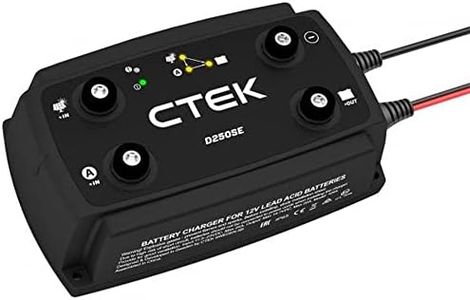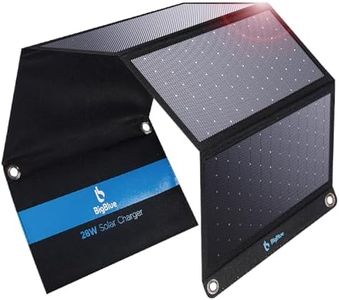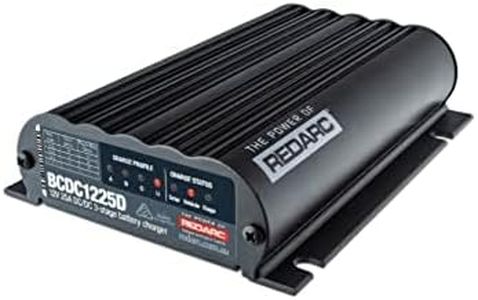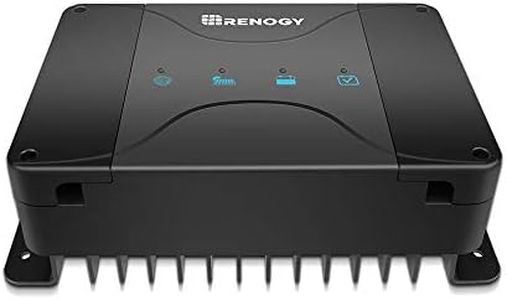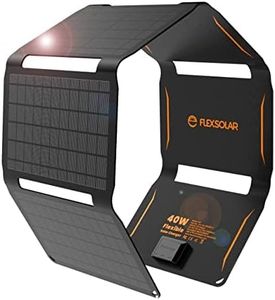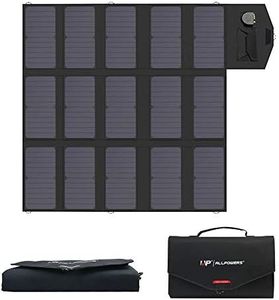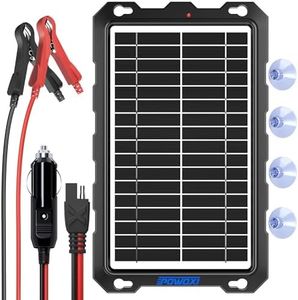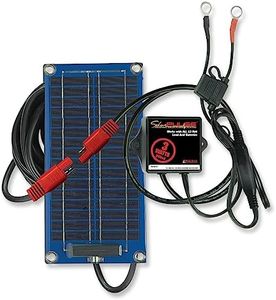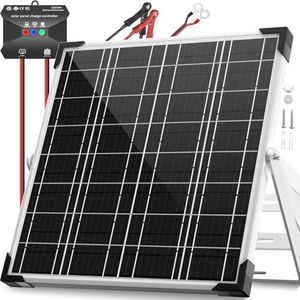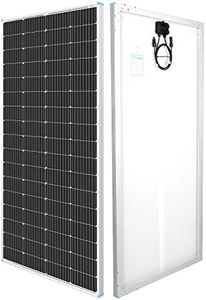We Use CookiesWe use cookies to enhance the security, performance,
functionality and for analytical and promotional activities. By continuing to browse this site you
are agreeing to our privacy policy
10 Best Solar Battery Chargers
From leading brands and best sellers available on the web.Buying Guide for the Best Solar Battery Chargers
Choosing a solar battery charger can be a great way to keep your devices powered up while staying eco-friendly. The right solar charger for you depends on what you want to charge, where you’ll use it, and how portable you need it to be. Looking closely at key technical details will help you decide which charger fits your lifestyle and needs best.Wattage (Power Output)Wattage tells you how much power the charger can provide to your devices and is one of the most important specs to consider. Higher wattage means the charger can handle larger devices or charge things faster. For basic needs like charging phones or small devices, lower wattage (5-10 watts) is often enough. For tablets, cameras, multiple devices, or faster charging, look for medium (15-30 watts) or high wattage chargers (over 30 watts). To figure out what's right for you, think about how many and what kind of devices you plan to charge—more or bigger devices need more power.
Output Voltage and CurrentOutput voltage and current indicate the kind of devices you can charge and how quickly charging will happen. Most portable electronics charge via USB, which uses a standard 5V output – this will suit most phones and smaller gadgets. For things like laptops or certain cameras, higher voltage (12V or 18V) outlets may be required. Current, measured in amps, affects the speed of charging: higher amps generally result in faster charging, but only if your device can accept it. Check what your devices need, and pick a charger with appropriate output options.
Battery Capacity (if built-in)Some solar chargers come with an integrated battery, which stores power so you can charge devices even when there’s no sun. Battery capacity is measured in milliamp-hours (mAh) or watt-hours (Wh). A small capacity (under 10,000 mAh) is suitable for occasional phone charges. Medium capacities (10,000-20,000 mAh) are better for frequent charging or multiple devices. Larger capacities (over 20,000 mAh) suit heavier users or longer trips. Think about how long you’ll be away from power sources and how many times you need to recharge your devices.
Portability and SizeThe size and weight of a solar charger determine how easy it is to take with you. Smaller, lightweight panels are ideal for hiking, biking, or camping where space and weight matter, but they may offer less power. Larger or folding panels deliver more power but are bulkier, making them better for car camping or travel where portability is less of a concern. Consider how and where you plan to use the charger when choosing the right mix of portability and performance.
Durability and Weather ResistanceSolar battery chargers are frequently used outdoors, so it’s important to consider how durable and weather-resistant they are. Basic units may only handle mild weather, while more rugged options can be resistant to rain, dust, and impacts. If you’ll be using your charger in rough or unpredictable environments, look for features like waterproof or dustproof ratings and sturdy construction. This ensures your charger will last and perform well in the conditions you expect to face.
Compatibility and ConnectionsCompatibility covers the types of devices and cables your charger supports. Most chargers use standard USB-A or USB-C ports, but some include specialized connectors or adapters for laptops or 12V car batteries. Make sure your charger has the right number and kind of outputs for your devices. If you switch gear often, chargers with multiple output types or included adapters offer greater flexibility.

